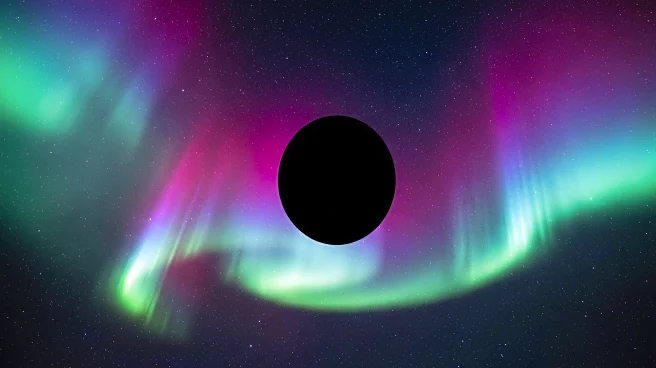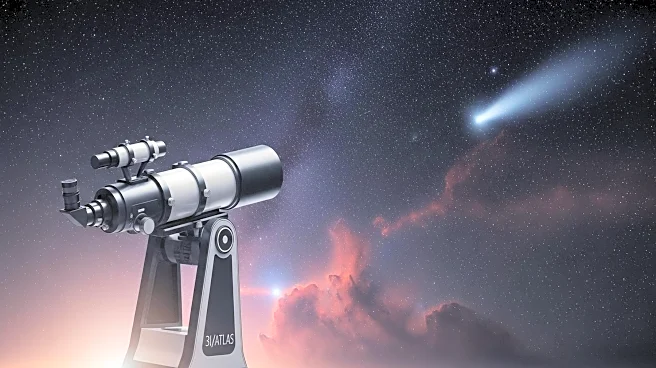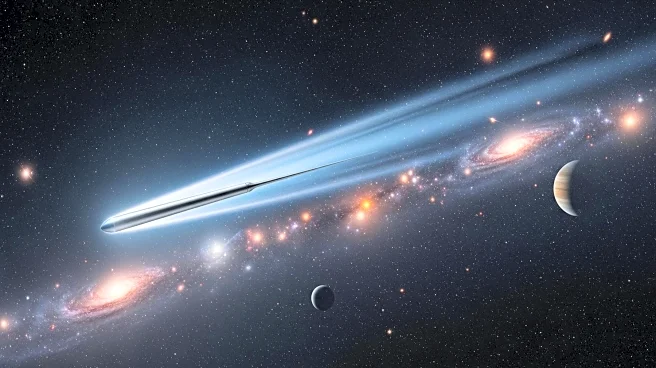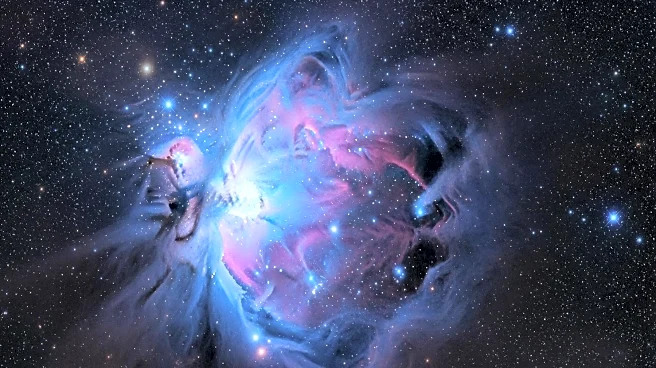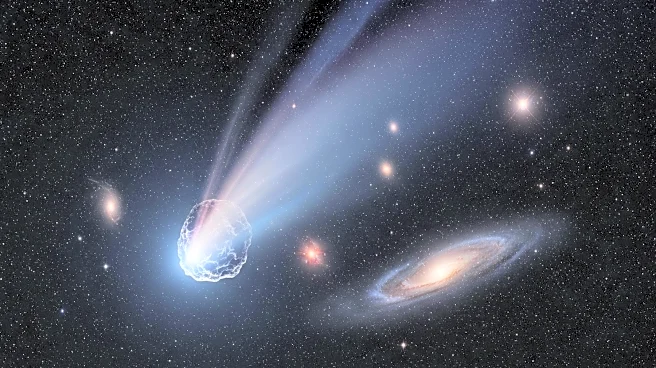What is the story about?
What's Happening?
Astronomers from Trinity College Dublin have utilized the NASA/ESA/CSA James Webb Space Telescope to study the atmospheric conditions of the rogue planet SIMP-0136. This planet, which is not bound to any star, exhibits strong auroral activity similar to the Northern Lights on Earth. The observations revealed minute changes in brightness as the planet rotated, allowing researchers to track temperature variations, cloud cover, and chemical composition. The auroral activity heats the planet's upper atmosphere, with temperatures reaching over 1,500 °C. The study, led by Dr. Evert Nasedkin, marks the first time changes in atmospheric properties have been directly measured on an extrasolar object. The findings also noted constant cloud coverage composed of silicate grains, unlike Earth's clouds.
Why It's Important?
The discovery of auroral activity on SIMP-0136 provides valuable insights into the atmospheric dynamics of rogue planets, which are not influenced by a host star. Understanding these processes is crucial for future studies of exoplanets, as it helps scientists develop models to predict weather patterns on distant worlds. The research demonstrates the capabilities of the James Webb Space Telescope in capturing detailed atmospheric data, paving the way for more comprehensive studies of exoplanets and brown dwarfs. This knowledge could eventually aid in identifying habitable conditions on other planets, expanding our understanding of the universe.
What's Next?
Future observations with advanced telescopes like the Extremely Large Telescope and the Habitable Worlds Observatory are expected to further explore the atmospheric dynamics of exoplanets. These studies will extend beyond isolated brown dwarfs to include gas giants and rocky worlds, potentially revealing more about their weather systems and habitability. The ongoing research will continue to refine models and techniques for studying distant planets, contributing to the broader field of astronomy and astrophysics.
Beyond the Headlines
The study of SIMP-0136's auroral activity highlights the importance of understanding atmospheric phenomena in the context of planetary science. The constant cloud coverage composed of silicate grains suggests unique weather patterns that differ significantly from those on Earth. This research underscores the potential for discovering diverse atmospheric conditions across the universe, which could have implications for the search for extraterrestrial life and the study of planetary formation.
AI Generated Content
Do you find this article useful?
